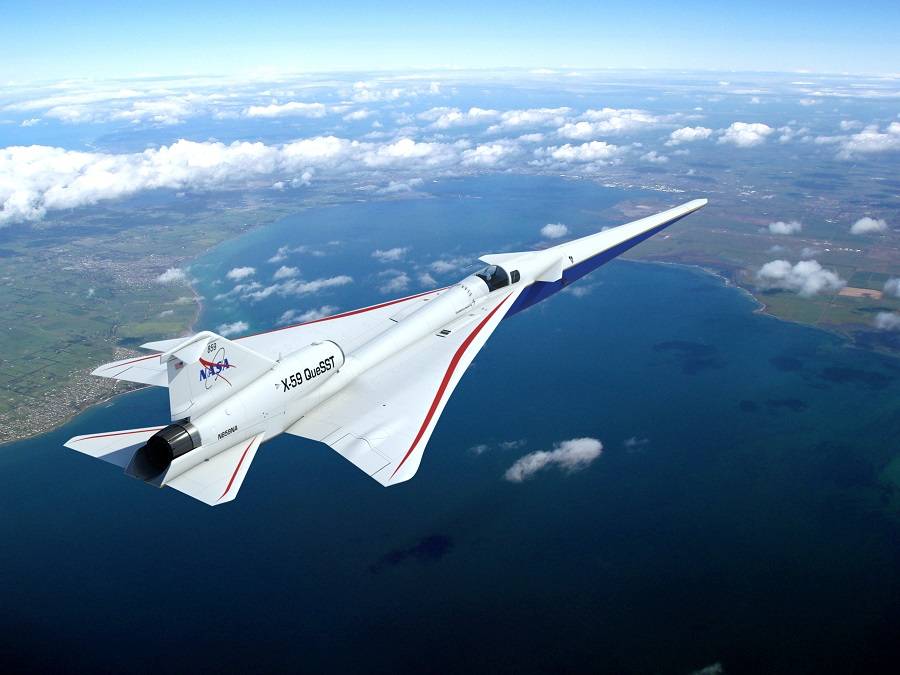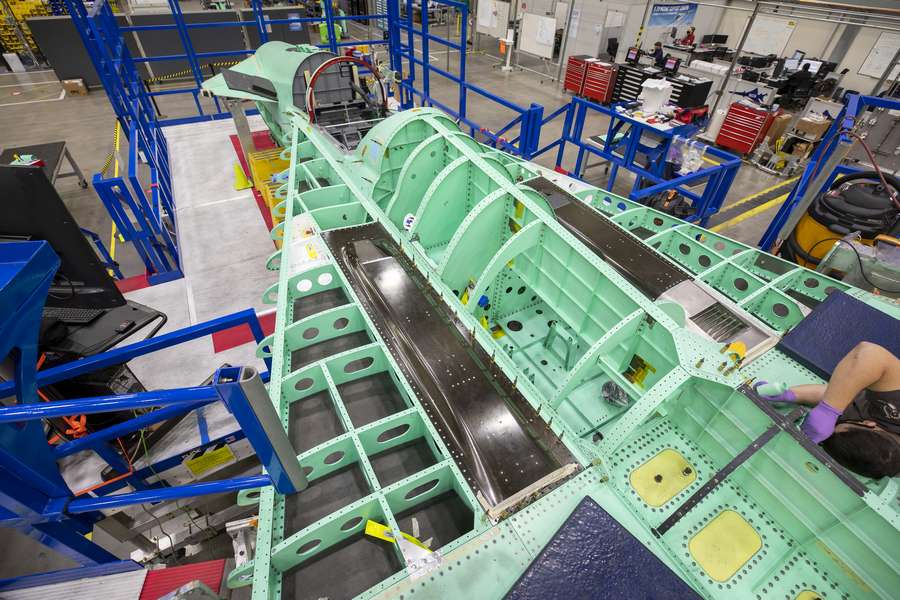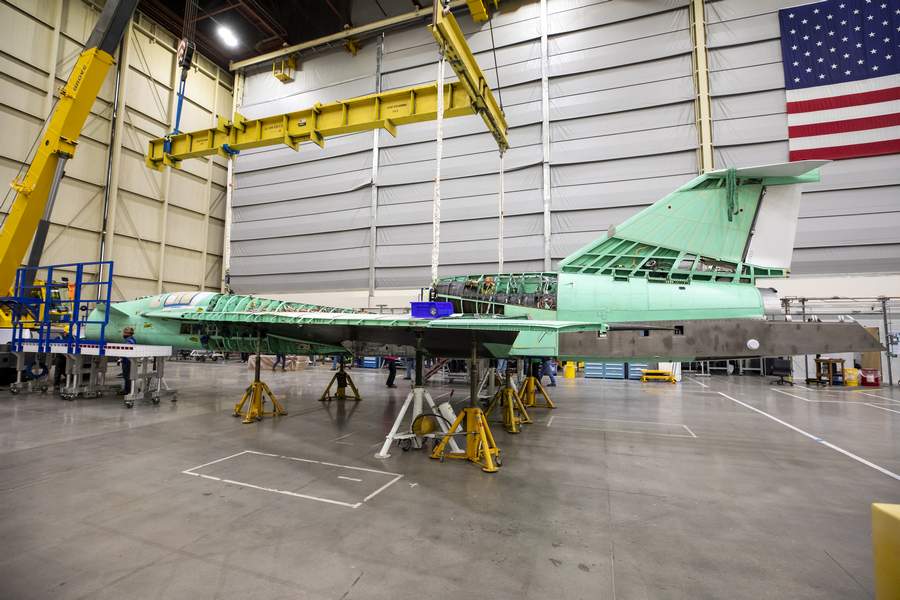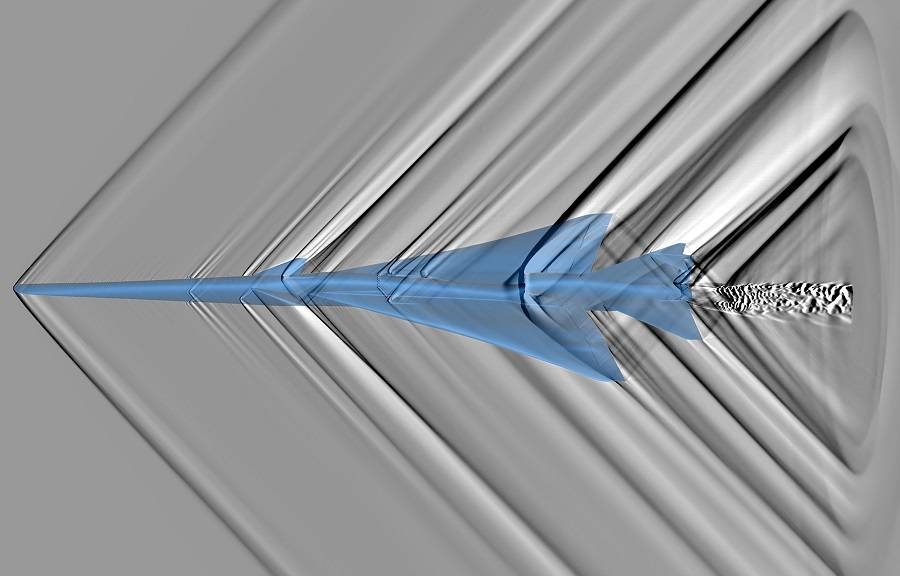Other supersonic aircraft programs have perhaps gotten more public attention, but NASA’s X-59 could well be the first one to actually fly.

Supersonic commercial flight has been capturing people’s imagination for a very long time. And of course, it isn’t without precedent. It may be nearly two decades since it last graced the skies, but the world hasn’t forgotten Concorde. At the time, many said that its retirement without a replacement was a step backwards in commercial aviation. And it’s hard not to sympathize with this sentiment.
But Concorde had many drawbacks and limitations – noise being perhaps the most prominent. And it is precisely this aspect of supersonic flight that NASA’s X-59 will explore. As we already saw, this is a test aircraft whose shape NASA believes will result in a greatly-reduced sonic boom. Actually, the goal is to have more of a sonic “thump”, than a boom.

Last we checked (in March 2021), NASA’s future test-bed was in Lockheed’s Skunkworks facility in California. Even in its assembly jig, the X-59 already looked… well, supersonic. Last November, the aircraft finally left its jig and got landing gear to stand on. Crews have already powered it on, to check its systems. And now, in January, the aircraft is up for a road trip!
X-59 – Supersonic Jet On A Trailer
Lockheed is now moving the plane to Forth Worth Texas, where it will undergo stress testing in its installations there. These tests will ensure that the X-59 can withstand the challenges of supersonic flight. It will then go back to California, for completion. But in the meantime, there is a lot more work and testing taking place. This includes life support systems, as well as cockpit and simulator development and testing.

But the X-59 supersonic project also includes work on other aircraft. NASA is fine-tuning an F-15B test-bed, with positioning systems that will allow it to fly very precise formations with the X-59. And it will do this at supersonic speeds, to test the shockwave coming off the test aircraft. NASA is already well into this testing, using other supersonic aircraft, to gather data.
The aircraft should fly for the first time within 2022. Then after more testing, the X-59 should begin supersonic test flights over urban areas in 2024. Along with similar flights from other aircraft, this will help validate designs that will allow supersonic commercial aircraft to fly over land. That is, assuming there is still interest in such commercial aircraft.

Helping Future Designs?
We have also seen initiatives to put such aircraft to market, from Boom Supersonic and Aerion. The latter has since closed its doors. But Boom is still going; its test aircraft should start flying this year. Interestingly, Boom’s development timeline for its supersonic airline doesn’t appear to take the X-59 into account. NASA’s project is meant to provide feedback for companies embarking on such projects.

It is also interesting to compare the development progress of the X-59 with that of Boom’s XB-1. Boom Supersonic rolled out its test-bed in October 2020. However it still hasn’t flown, nor do we have any updates regarding ground runs or other types of testing. On the other hand, NASA seems to be planning to fly its X-59 soon after its roll-out – but obviously not supersonic right away.
Of course, NASA and Lockheed have far more experience in designing and testing such aircraft. But it’s interesting to note that their timeline is still quite conservative. In any case, noise is just one of the challenges of such flights. Getting the necessary range and efficiency, with the right capacity, is another. Hopefully, NASA’s X-59 will play a part, by setting a framework for the FAA to make certification of such supersonic jets possible.



